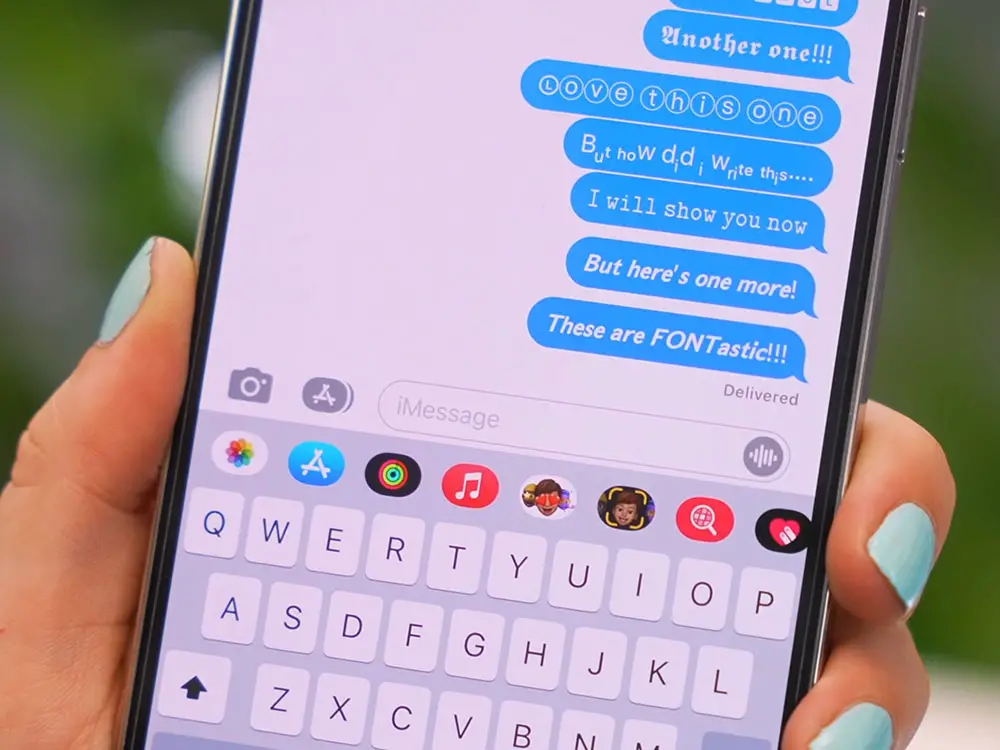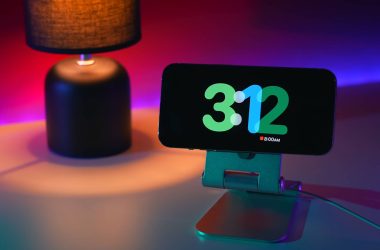Navigating in and out of message threads in the iMessage app can sometimes be a frustrating experience.
One of the most common issues users report is difficulty quickly exiting a message thread to return to the main iMessage screen.
The instinct for many is to swipe right, similar to how you would in other messaging apps like Instagram or Facebook Messenger. Unfortunately, this gesture does not work by default in iMessage.
The Limitations of Swipe Gestures in iMessage
Unlike other messaging platforms, iMessage does not support swiping right from anywhere in the message thread to go back or exit.
The main way to exit an iMessage thread is to tap the back button in the top left corner of the screen. Apple’s interface design philosophy for iMessage aims to keep the focus on conversing within a thread rather than constantly switching between different threads. While understandable, this does mean you need to fully exit a thread before navigating to another one.
iMessage does allow some swipe gestures, but they are limited in scope:
- Swipe right to reply – In iOS 14, Apple introduced a new feature that allows you to swipe right on an individual message to quickly reply to it. But this only works within a thread, not to exit it.
- Swipe left to delete – You can swipe left on a message to reveal a Delete button, but again this is only deleting that message, not exiting the thread.
So why doesn’t simply swiping right from anywhere work in iMessage? There are a few technical reasons for this:
- iMessage is designed as a single view app – Unlike apps with navigation hierarchies, iMessage has one main view that expands into threads. There is no underlying “right” screen to logically swipe to.
- Horizontal swipe gestures already used for other actions – As mentioned above, Apple reserves horizontal swipes for actions like replying and deleting. Adding another right swipe action could conflict with these existing gestures.
- Risk of accidentally exiting threads – With no confirmation prompts, easily swiping out of threads could lead to users accidentally exiting threads when trying to scroll through messages.
While this behavior is intentional, it can definitely be frustrating if you’re used to other apps that allow free navigation via swiping. But there are a few ways you can replicate swipe gestures in iMessage or otherwise quickly jump out of threads.
Setting Up a Right Edge Screen Swipe Gesture
If you really want to activate a right swipe gesture anywhere in the iMessage app, iOS does provide a way to set this up through the system settings:
- Go to Settings > Accessibility > Touch
- Scroll down and select “Back Tap”
- Under “Double Tap” or “Triple Tap”, choose “App Switcher”
This enables you to double tap or triple tap on the right edge of the screen to bring up the app switcher view, which is a quick way to jump out of whatever app you’re in. It takes a little getting used to, but double or triple tapping the screen edge becomes a natural shortcut once your muscle memory has it down.
You can then swipe up on the iMessage app preview in the app switcher to fully close out of it. While not exactly the same as swiping right, having this gesture activation on the right edge mimics the physical motion of swiping from the edge inward.
Some potential downsides to be aware of with this method:
- It exits the entire app, not just the specific thread you’re in. So you would need to reopen the iMessage app to view other threads.
- Double/triple tapping is less fluid than a single swipe gesture.
- You lose the ability to use Back Tap for any other accessibility shortcuts.
But if you’re willing to deal with those trade-offs, it’s the closest native option to replicating a right swipe-to-exit gesture in iOS.
Changing Navigation Settings in iMessage
If using Back Tap doesn’t appeal to you, there are a couple settings within iMessage itself that can help streamline navigation:
Disable Swipe to Reply
As mentioned earlier, the Swipe to Reply feature introduced in iOS 14 can sometimes interfere with trying to quickly swipe out of a thread. Disabling it prevents that conflict:
- In iMessage, tap the Settings gear icon in the upper right
- Tap the switch next to Swipe to Reply to turn it off
With Swipe to Reply disabled, you don’t have to worry about accidentally triggering a reply action when trying to swipe back. However, you will lose the convenience of that feature.
Tap Top of Screen to Return
If reaching the back button in the top left corner still feels like a stretch, you can enable a setting to jump to the thread list by simply tapping the top of the screen anywhere:
- In iMessage Settings, go to the Messages tab
- Toggle on Tap Top of Screen to Return
This adds a thin strip at the very top that acts as a tap target to exit the thread. Tapping anywhere within that strip will bring you back to the message list. It gives you a much closer target to tap without having to reach the corner.
You do need to be precise with your tap, but many find this to be a quicker method than the back button.
Recent iOS Updates Affecting iMessage Navigation
Recent iOS updates, especially iOS 16 and iOS 17, have included changes that affect navigating iMessage threads:
Removal of Full Screen Effects
In previous iOS versions, tapping the back button in iMessage would minimize the thread with an animated full screen effect. This added a bit of delay when trying to exit a thread quickly. iOS 16 removed that effect and now exiting a thread is much faster without the animation.
Swipe Gesture Conflicts
As noted earlier, the addition of Swipe to Reply and other lateral swipe gestures can sometimes interfere with any attempts to swipe back. iOS 17 in particular seems prone to conflicts between these gestures, making edge swipes unreliable.
Workarounds Not Working
Some of the workarounds mentioned here, such as swiping from the far left edge, have been reported not to work consistently in iOS 17. It’s not clear if this is a bug or intentional change. But iOS updates tend to change the specific ways you can navigate iMessage threads.
If your device is running iOS 17 and you are having issues with gestures that previously worked, upgrading to the latest version of iOS may help. Apple has likely issued fixes addressing reported navigation problems, so keeping your system fully updated is recommended.
Using Siri Shortcuts
One method we haven’t touched on yet for quickly exiting iMessage is creating a custom Siri shortcut. With just a couple steps, you can set up a voice command through Siri to immediately return you to the iMessage conversation list:
- Open the Shortcuts app and tap the + to create a new shortcut
- Add the action “App” and select iMessage
- Name the shortcut something like “Exit iMessage Thread”
- Tap the switch under “Ask Before Running” to disable it
Now anytime you say “Hey Siri, exit iMessage thread,” Siri will automatically open the main iMessage screen, exiting whatever conversation you’re currently in.
This allows you to bypass any navigation UI and exit threads hands-free with just your voice. Especially useful while driving or when you can’t easily tap your screen.
You can make the command even simpler by going to the iMessage app’s Siri & Search settings and adding the phrase there. Doing so lets you exit threads by saying just “Hey Siri, return to messages.”
Potential Apple Fixes and Workarounds
So those are the best options currently available for exiting iMessage threads on iOS devices. But looking ahead, there are a few potential changes Apple could implement to improve the navigation experience:
- Universal swipe gesture – The most obvious enhancement would be for Apple to allow swiping right from anywhere to exit a thread.
- Distinguish between edge and inner swipes – Apple could reserve edge swipes for navigating back, while keeping inner swipes for threaded actions like replying or deleting.
- Faster animations – Reducing the transition time when tapping the back button would speed up navigation.
- Overhaul navigation conventions – More fundamental changes to how iMessage conceptualizes threads and navigation could resolve these issues.
As a workaround for now, some users resort to jailbreaking their devices to install tweaks that enable custom iMessage gestures. But jailbreaking comes with major security and stability risks, so cannot be recommended.
All we can do is continue providing Apple feedback about improving iMessage navigation. With enough user requests, perhaps future iOS versions will include fixes to problems like inconsistent swipe detection and slow transition animations.
Adjusting Your Messaging Style
Even with the most optimal settings and gestures, Apple has designed iMessage as a fairly closed messaging system. Threaded conversations are siloed by design, requiring explicit navigation between them.
So in addition to interface tweaks, it helps to adapt your messaging habits to be more sequential. Rather than rapidly switching between ongoing threads, try to focus on one conversation at a time.
Some tips for adjusting your messaging flow:
- Turn on Do Not Disturb when you need to focus on a single thread.
- Use scheduled send for replies when bouncing between active conversations.
- Stick to single-line responses to avoid writing paragraphs in the wrong thread.
- Close threads when conversations have naturally ended or been addressed.
While not always practical, avoiding constant back-and-forth context switching makes navigating iMessage’s threads more manageable. Leaning into its more linear conversation flow can create a simpler, more focused messaging experience.




